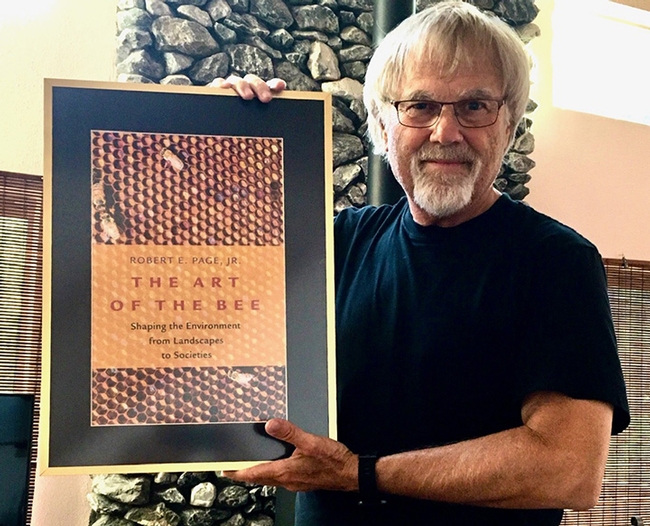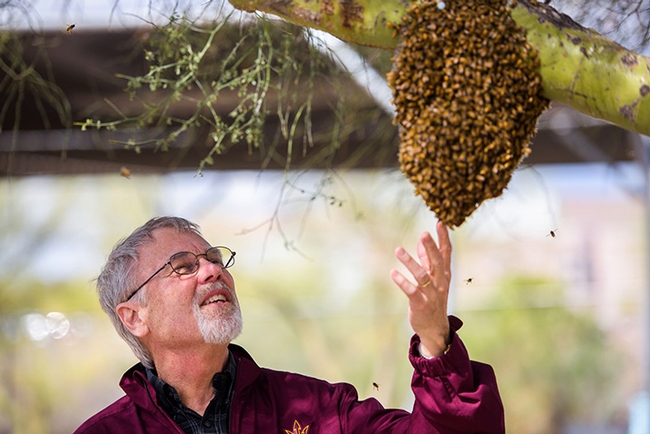- Author: Kathy Keatley Garvey
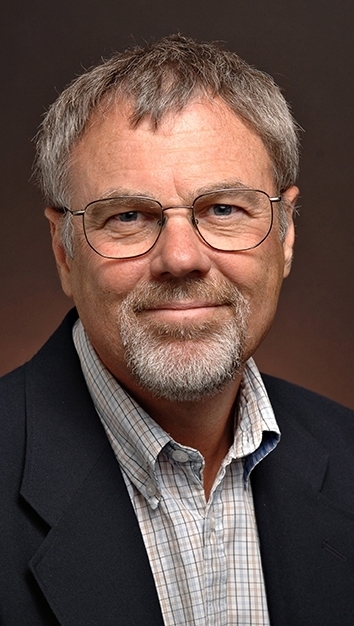
Page, a UC Davis doctoral alumnus, a UC Davis distinguished emeritus professor and former chair of the UC Davis Department of Entomology, wrote an article The Art of the Bee for the journal, and editor Robert Brodschneider interviewed him in a piece titled Robert E. Page Jr--Mapper of the Genetic Architecture of the Honey Bee.
Rob lives and breathes bees, UC Davis, and Arizona State University (ASU). He obtained his doctorate in entomology in 1980 from UC Davis; joined the UC Davis faculty in 1989; and chaired the Department of Entomology from 1999 to 2004. After retiring from UC Davis in 2004, he accepted an appointment at ASU as founding director of the School of Life Sciences. He served as provost of ASU from 2013- 2015, and dean of the College of Liberal Arts and Sciences, 2011-2013.
His research on honey bee behavior and genetics appears in his publications: Queen Rearing and Bee Breeding (1997, with Harry H. Laidlaw Jr., his major professor at UC Davis and "the father of honey bee genetics"); The Spirit of the Hive, Harvard University Press (2013); and The Art of the Bee, Oxford University Press (2020). His 230-plus research papers have been cited more than 20,000 times.
Much of Rob Page's research occurred at UC Davis. For 24 years, from 1989 to 2015, he maintained a honey bee-breeding program, managed by bee breeder-geneticist Kim Fondrk, at the Harry H. Laidlaw Jr. Honey Bee Research Facility on Bee Biology Road, west of the central campus. Their contributions include discovering a link between social behavior and maternal traits in bees. Their work was featured in a cover story in the journal Nature. In all, Nature featured his work on four covers from work mostly done at UC Davis.
Looking to learn more about bees? You'll want to pick up a copy of his book, ;The Art of the Bee: Shaping the Environment from Landscapes to Societies, 2020, Oxford University Press), and/or access his newly created free YouTube channel, The Art of the Bee," at https://www.youtube.com/@artofthebee.
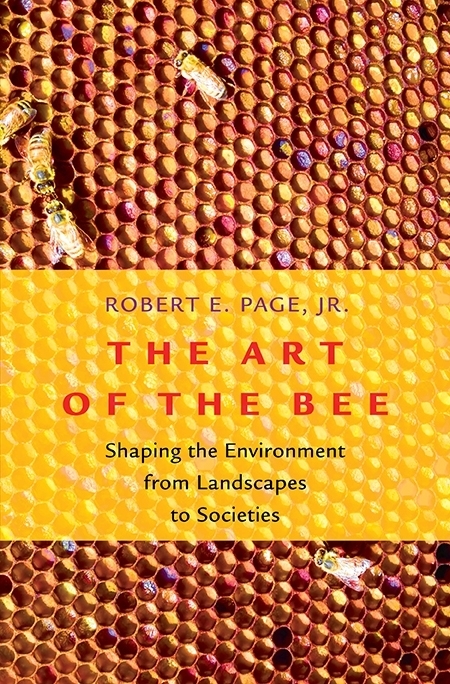
Why did Page create the free and accessible-to-all YouTube Channel? Because that's what Alexander von Humboldt (1769-1859), known as a German geographer, naturalist, explorer, and proponent of Romantic philosophy and science, would have done.
It's about making science understandable.
"Von Humboldt appealed to artists to learn about nature, and ecology, and paint it," Page wrote in the Bee World article. "He believed that artists and writers could do more to advance an understanding of science and nature than the scientific specialist. His plea was for making science understandable to the public, a plea for popular science."
Page's YouTube channel guides the viewer through "the fascinating biology and behavior of the bee," presented in 38 videos ranging from 4 to 27 minutes in length. He organized the videos into six segments that roughly correspond to the nine chapters of the book:
- Landscape Artists
- Environmental Engineers
- The Social Contract
- Superorganisms
- How to Make a Superorganism
- Song of the Queen.
We love this passage from his book:
"The impact of bees on our world is immeasurable. Bees are responsible for the evolution of the vast array of brightly-colored flowers and for engineering the niches of multitudes of plants, animals, and microbes. They've painted our landscapes with flowers through their pollination activities and have evolved the most complex societies to aid their exploitation of the environment."
We can learn so much from the bees...
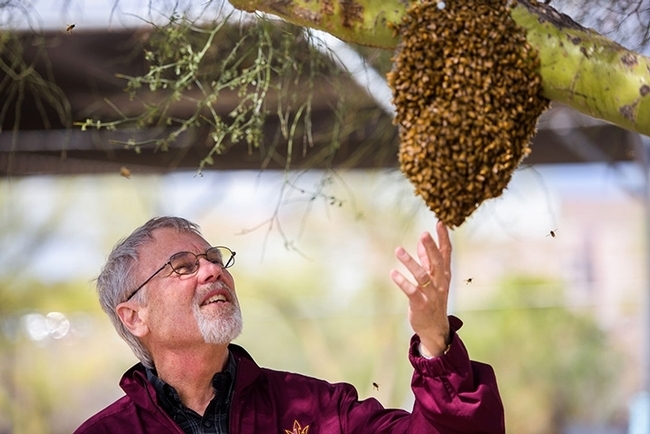
- Author: Kathy Keatley Garvey
Have you ever pulled up a chair in your garden and watched honey bees foraging?
They are so intent on their "bees-ness" that they don't know you're there. It's a great opportunity to photograph them.
Sometimes, if you're lucky, they'll buzz over your head on their way back to their colony, and you'll see:
- The three main body parts: head, thorax and abdomen
- The two pairs of wings
- The three pairs of legs
- The pair of antennae
Such was the case in Vacaville this week when we were watching honey bees forage in our African blue basil, a bee magnet that we plant annually. We first learned of African blue basil, (Ocimum kilimandscharicum × basilicum 'Dark Opal'), through Gordon Frankie, UC Berkeley professor and the late Robbin Thorp, distinguished emeritus professor of entomology at UC Davis. They co-authored the book, California Bees and Blooms: a Guide for Gardeners and Naturalists (Heyday Books) with Rollin Coville and Barbara Ertter, also affiliated with UC Berkeley.
Want to know more about honey bees? Be sure to read the newly published The Art of the Honey Bee; Shaping the Environment from Landscapes to Societies (Oxford University Press) by noted bee geneticist and biologist Robert E. Page Jr., who maintains strong ties to UC Davis and Arizona State University (ASU). Also learn about honey bee anatomy on ASU's web page, "Ask a Biologist."
Page, who holds a doctorate in entomology from UC Davis, is a former chair of the UC Davis Department of Entomology. In 2004, Arizona State University (ASU) recruited him for what would become a series of top-level administrative roles. He advanced from director of the School of Life Sciences to dean of Life Sciences; vice provost and dean of the College of Liberal Arts and Sciences; and university provost. Today he holds the titles of provost emeritus of ASU and Regents professor emeritus, as well as UC Davis department chair emeritus, professor emeritus, and UC Davis distinguished emeritus professor.
Tool Kit
Did you know a bee has a tool kit? Page lists the tool kit in his book, The Art of the Bee: a compass, an odometer and a path integrator.
'As 'central place foragers,' bees fly out from the nest site and explore the surrounding environment in search of food resources," writes Page, renowned for his research on honey bee behavior and population genetics, particularly the evolution of complex social behavior. "They return to the nest with the resources they collect. To do this, they need to be able to navigate out and find their way back. To aid them, they have a toolkit of navigation mechanisms."
One tool in their tool kit is their internal compass that depends on the location of the sun.
"As light from the sun passes through the atmosphere, it becomes polarized," Page writes. "The pattern of polarized light in the sky depends on the angle of the sun relative to where you are looking. Bees have special sensors in their eyes for detecting the polarized light patterns. On cloudy days, they can't see the sky; but they can still locate the sun using ultraviolet light detectors. Ultraviolet light penetrates cloud cover, allowing bees to use the location of the sun as a navigational marker. With heavy clouds, bees can get to and from a resource by relying solely on landmarks that they learn; otherwise, they stay home until the weather changes. However, as the earth turns, the sun is always changing location relative to the horizon, making it an unreliable marker unless you know the time of day, and bees do. They learn the movement of the sun across the sky and reference it to an internal clock. We know they have the clock because we can train them to forage at specific times of day. If you anesthetize a bee, you can stop her clock. When she awakens and takes a foraging trip to a learned foraging station, her flight path will be offset by the amount of time lost. In other words, she will misinterpret the direction based on the current location of the sun by the amount of time she was anesthetized."
"The odometer plus the ability to determine a flight vector (direction and distance) from a given landmark along a resource flight path, using their sun compass and internal clock, give bees the basic tools for navigation," Page writes. "The last tool in the toolkit is a path integrator that combines the compass and odometer information."
It's a fascinating book by Page, whose most salient contributions to science include constructing the first genomic map of the honey bee, which sparked a variety of pioneering contributions not only to insect biology but to genetics at large.
Meanwhile, take the challenge. Pull up a chair in your garden and watch and photograph the bees going about their "bees-ness."
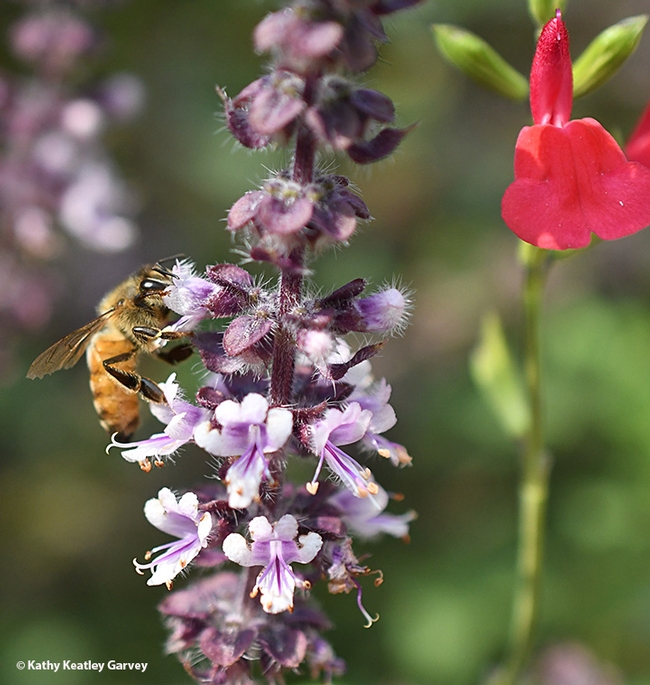
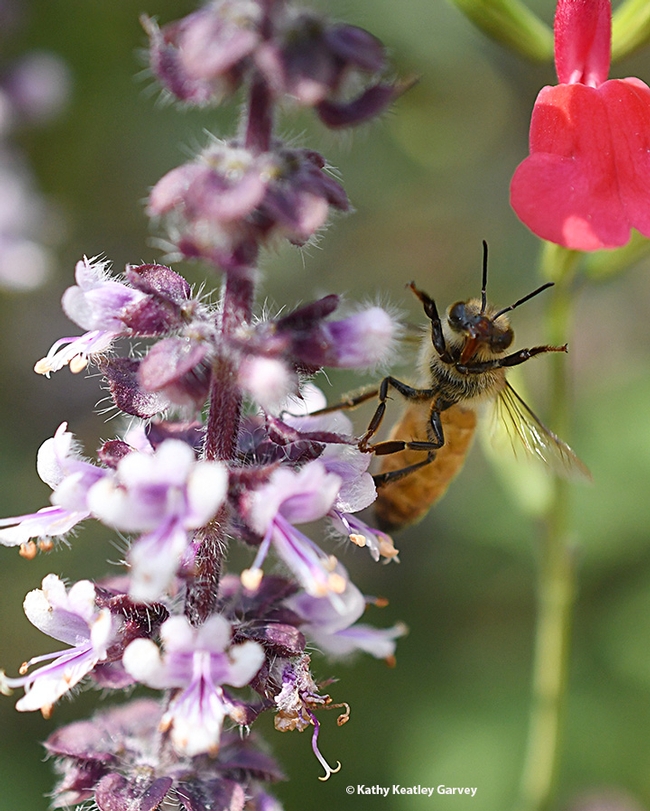
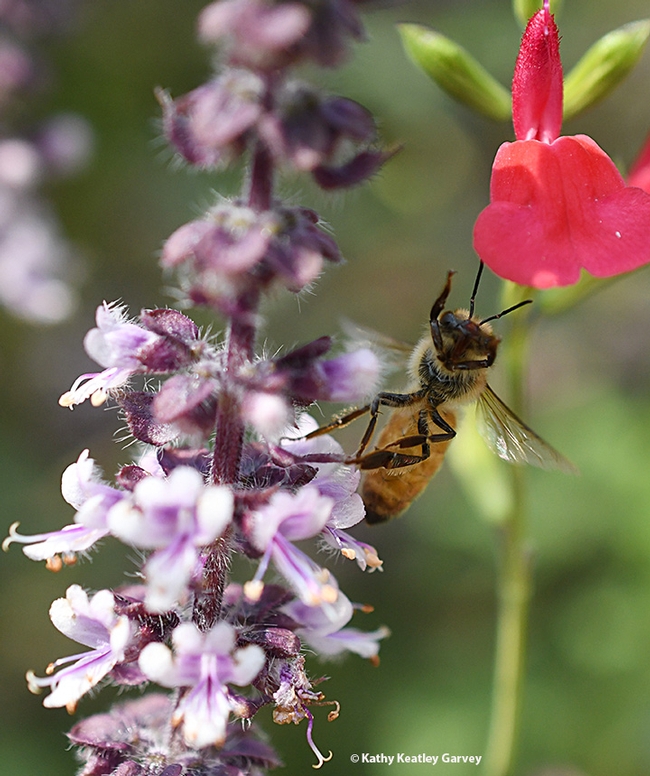
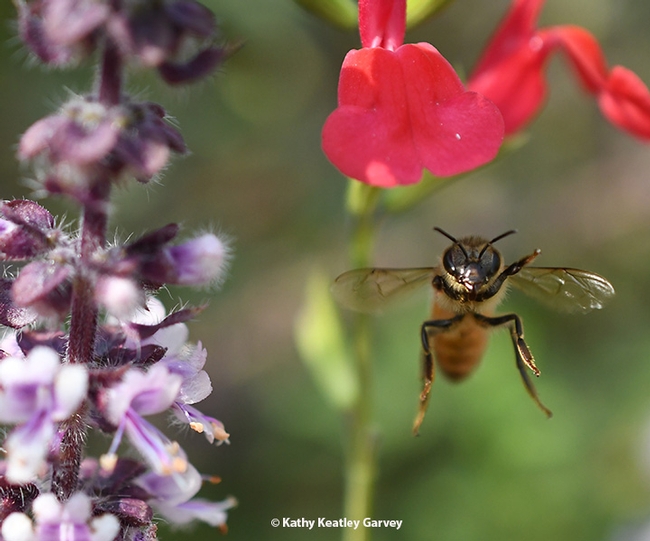
- Author: Kathy Keatley Garvey
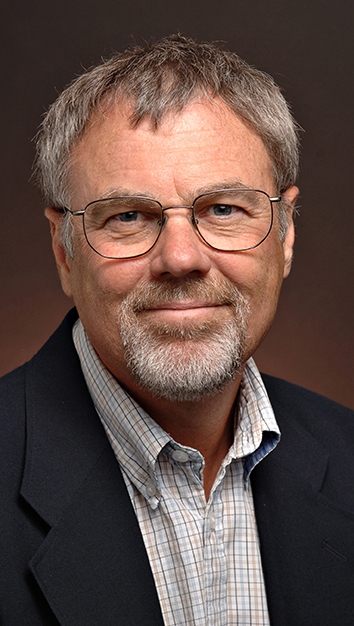
And it's sure to "bee" among the very best.
Eminent honey bee geneticist and biologist Robert E. Page Jr. has authored a 256-page book, “The Art of the Bee: Shaping the Environment from Landscapes to Societies” (Oxford University Press), to be published Aug. 6.
Did you know that honey bees are both artists and engineers?
As environmental artists, they are "responsible for the brilliantly colored flowers in our landscapes," and as environmental engineers, they engineer “the niches of multitudes of plants, animals and microbes.”
The book "is a long time in the making,” said Page, who received his doctorate in entomology at UC Davis and served as a professor and chair of the Department of Entomology (now Entomology and Nematology) before heading to Arizona State University (ASU), where he advanced to school director, college dean and university provost.
“Twenty-five years ago, my friend and mentor Harry Laidlaw (for whom the UC Davis bee facility is named) wanted to write a honey bee biology textbook,” Page recalled. When they finished the outline, “it looked very much like the excellent book by Mark Winston The Biology of the Honey Bee, published in 1987 by Harvard University Press. I decided we didn't need another one, and we still don't.”
The book differs in that it's a collection of “sparkling essays” that “read like mystery stories,” said Rudiger Wehner, professor and director emeritus of the Institute of Zoology, University of Zürich. “With these lucidly written stories, Page takes us on a delightful journey through the many biological traits that on the whole constitute the honeybees' social contract.”
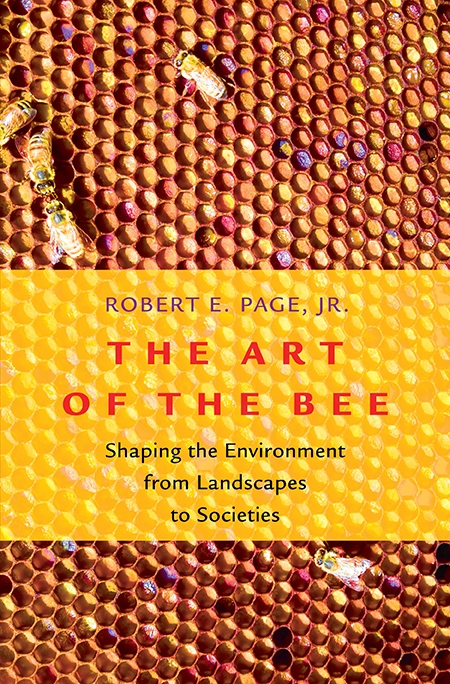
Page said his book is geared toward “the person who has a basic knowledge of biology and a fascination with bees, perhaps an educated hobby beekeeper--there are a lot of them--or an undergraduate or graduate student with an interest.”
“Prior to the rise of flowering plants, the landscape was dull,” Page begins. “The first plants invaded land more than 450 million years ago. Species of ferns, horsetails, club mosses, and other “primitive,” non-seed-producing, non-flowering plants dominated. The earth was painted from a palette of green and brown. The first seed plants were gymnosperms, which originated around 100 million years later and eventually gave rise to the conifers that dominated the earth with massive forests. The first flowering plants, the angiosperms, appeared perhaps as early as 250 million years ago. The rise of flowering plants resulted in a burst of new plant species as they adapted to their insect pollinators, mostly beetles and short-tongued flies. Think of how the landscape changed. “
In addition to chapters on environmental artists and environmental engineering, Page includes chapters on social contracts, superorganisms, reproductive competitions, and concludes with “The song of the queen.”
In the epilogue, Page ponders the complexity of individual bees and their colonies, comparing them to humans. “Members of complex societies live close together in closed nests, shared home sites, villages, etc., or in closely connected nomadic tribes. As groups, they typically have a set of tacit rules by which they live that involves working for the good of the group, systems of group and resource defense, internal mechanisms of policing cheaters that don't cooperate and live by the rules, a division of labor often associated with group defense and gathering and sharing resources, and usually asymmetries and rules associated with reproduction. These same general characteristics seem to apply broadly across eusocial insects (aphids, termites, bees, ants, and wasps), eusocial rodents (naked mole rats), higher apes, and humans. Why? The similarities are inescapable due to the nature of social contracts; they must have specific elements to protect the power and will of individuals, whether citizens of the United States of America or workers in a honey bee colony. The contract binds individuals to a society, but the specific social organization evolves by reverse engineering. Natural selection acts on the whole colony; social structure evolves to fit the needs of the group within a given environment. “
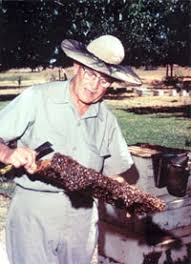
Page points out that “Anthropocentric thinking can obscure the way we view nature and lead to false conclusions. Look at Aristotle and honey bee division of labor: For more than 2,000 years it was thought that the bees that work in the nest were postpubescent old men because they're hairy! In fact, the older bees forage and aren't hairy because the hairs break off as they age. I now see my work in a new light; we aren't so different, bees and humans. The elements of our social structures, and how they come about, have many similarities.”
Page is known for his research on honey bee behavior and population genetics, particularly the evolution of complex social behavior. One of his most salient contributions to science was to construct the first genomic map of the honey bee, which sparked a variety of pioneering contributions not only to insect biology but to genetics at large.
At UC Davis, he maintained a honey bee-breeding program for 24 years, from 1989 to 2015, managed by bee breeder-geneticist Kim Fondrk at the Harry H. Laidlaw Jr. Honey Bee Research Facility. They discovered a link between social behavior and maternal traits in bees.
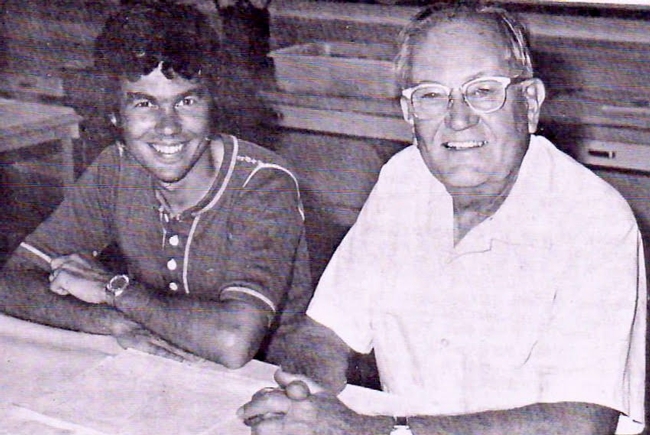
Page has authored more than 250 research papers, including five books. Among them “The Spirit of the Hive: The Mechanisms of Social Evolution” (Harvard University Press, 2013) and “Queen Rearing and Bee Breeding,” with Harry H. Laidlaw (Wicwas Press, 1997). He is a highly cited author on such topics as Africanized bees, genetics and evolution of social organization, sex determination, and division of labor in insect societies.
Page, who received his doctorate in entomology from UC Davis in 1980, joined the UC Davis faculty in 1989 and left as emeritus chair of the Department of Entomology in 2004 when ASU recruited him for what would become a series of top-level administrative roles. He advanced from director of the School of Life Sciences to dean of Life Sciences; vice provost and dean of the College of Liberal Arts and Sciences; and university provost. Today he holds the titles of provost emeritus of ASU and Regents professor emeritus, as well as UC Davis department chair emeritus, professor emeritus, and UC Davis distinguished emeritus professor.
Page is an elected member of the American Academy of Arts and Sciences, the Brazilian Academy of Science, Leopoldina (the German National Academic of Science), and the California Academy of Science. He is a recipient of the Alexander von Humboldt Senior Scientist Award (Humboldt Prize, 1995), the Carl Friedrich von Siemens Fellowship (2013), James W. Creasman Award of Excellence at ASU (2018).
